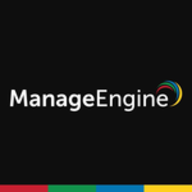


Red Hat Ansible Automation Platform and ManageEngine OS Deployer are products competing in IT management solutions. While Red Hat Ansible offers superior automation and integration features, ManageEngine OS Deployer excels in deployment efficiency, with advantages depending on specific user needs.
Features: Red Hat Ansible Automation Platform includes extensive system automation, diverse integration support, and scalability. ManageEngine OS Deployer offers seamless OS deployment, comprehensive imaging, and provisioning capabilities, ideal for networked environments.
Ease of Deployment and Customer Service: ManageEngine OS Deployer provides a straightforward setup process, reducing deployment time. It is backed by responsive customer support. Red Hat Ansible Automation Platform requires detailed configuration for deployment but offers a strong support network and extensive documentation.
Pricing and ROI: Red Hat Ansible Automation Platform has higher initial costs with extensive enterprise features, potentially leading to long-term ROI through automation. ManageEngine OS Deployer is cost-effective with lower setup costs and quick returns through streamlined processes. Each offers value according to deployment efficiency and automation benefits.
| Product | Market Share (%) |
|---|---|
| Red Hat Ansible Automation Platform | 14.0% |
| Microsoft Intune | 8.7% |
| ManageEngine OS Deployer | 0.9% |
| Other | 76.4% |


| Company Size | Count |
|---|---|
| Small Business | 117 |
| Midsize Enterprise | 46 |
| Large Enterprise | 152 |
| Company Size | Count |
|---|---|
| Small Business | 24 |
| Midsize Enterprise | 8 |
| Large Enterprise | 48 |
Microsoft Intune provides centralized management of mobile devices and applications, ensuring security, compliance, and productivity through integration with Microsoft services like Microsoft 365 and Azure Active Directory.
Organizations use Intune for managing mobile devices and applications, enhancing security and compliance across platforms. With features like single sign-on, conditional access, and zero-touch deployment via Autopilot, it facilitates efficient operations. Intune's scalability, easy enrollment, and capabilities such as remote wipe support diverse device management, offering robust data protection and efficient operation. Despite its features, improvement areas include reporting, compatibility with non-Microsoft devices, and better support for macOS and Linux devices.
What are the key features of Microsoft Intune?
What benefits should users look for in reviews?
In industries such as finance, healthcare, and education, Microsoft Intune is implemented to ensure secure and compliant device management. Companies leverage its capabilities to deploy security policies and manage both corporate-owned and BYOD environments, facilitating a unified approach to data protection and compliance.
OS Deployer automates the disk imaging and deployment process. It helps administrators capture images of different OS versions and store them in a network share, to create different deployment templates for various employee roles, and deploy the images to the new systems all from a central management console. With central image capturing and deployment capabilities, OS Deployer reduces support, training and management costs by standardizing your entire organization on one or more operating systems. OS Deployer creates an exact disk image of the given system including standard configuration, operating system, configuration files and all applications that can be deployed to multiple systems simultaneously, making it ideal for rapid bare-metal provisioning. Supported OS : Windows XP, Windows 2003, Windows Vista, Windows 2008, Windows 7, Windows 8, Windows 8.1, Windows 2012, and Windows 2012 R2.
Red Hat Ansible Automation Platform streamlines IT operations with features like a simplified GUI and extensive module support. Its agentless architecture and YAML ease make it an adaptable choice for managing diverse infrastructures efficiently.
Red Hat Ansible Automation Platform offers a robust automation framework that supports multiple environments and integrates well with various applications. Its agentless Python-based architecture facilitates efficient server management and rapid update deployment. Users benefit from centralized management through Ansible Tower, role-based access control, and dynamic inventory. However, improvement areas include documentation, API integration, network support, and UI scaling. Enhanced community contributions could address module availability and compatibility gaps.
What are the most important features of Red Hat Ansible Automation Platform?In industries like finance, healthcare, and technology, Red Hat Ansible Automation Platform is used for network management, security compliance, and configuration tasks. Organizations utilize its capabilities for cloud and on-premises deployment, infrastructure provisioning, and workflow orchestration. Many integrate it with tools such as Puppet or Terraform to enhance CI/CD processes, benefiting from its agentless design in adapting to cloud environments.
We monitor all Configuration Management reviews to prevent fraudulent reviews and keep review quality high. We do not post reviews by company employees or direct competitors. We validate each review for authenticity via cross-reference with LinkedIn, and personal follow-up with the reviewer when necessary.